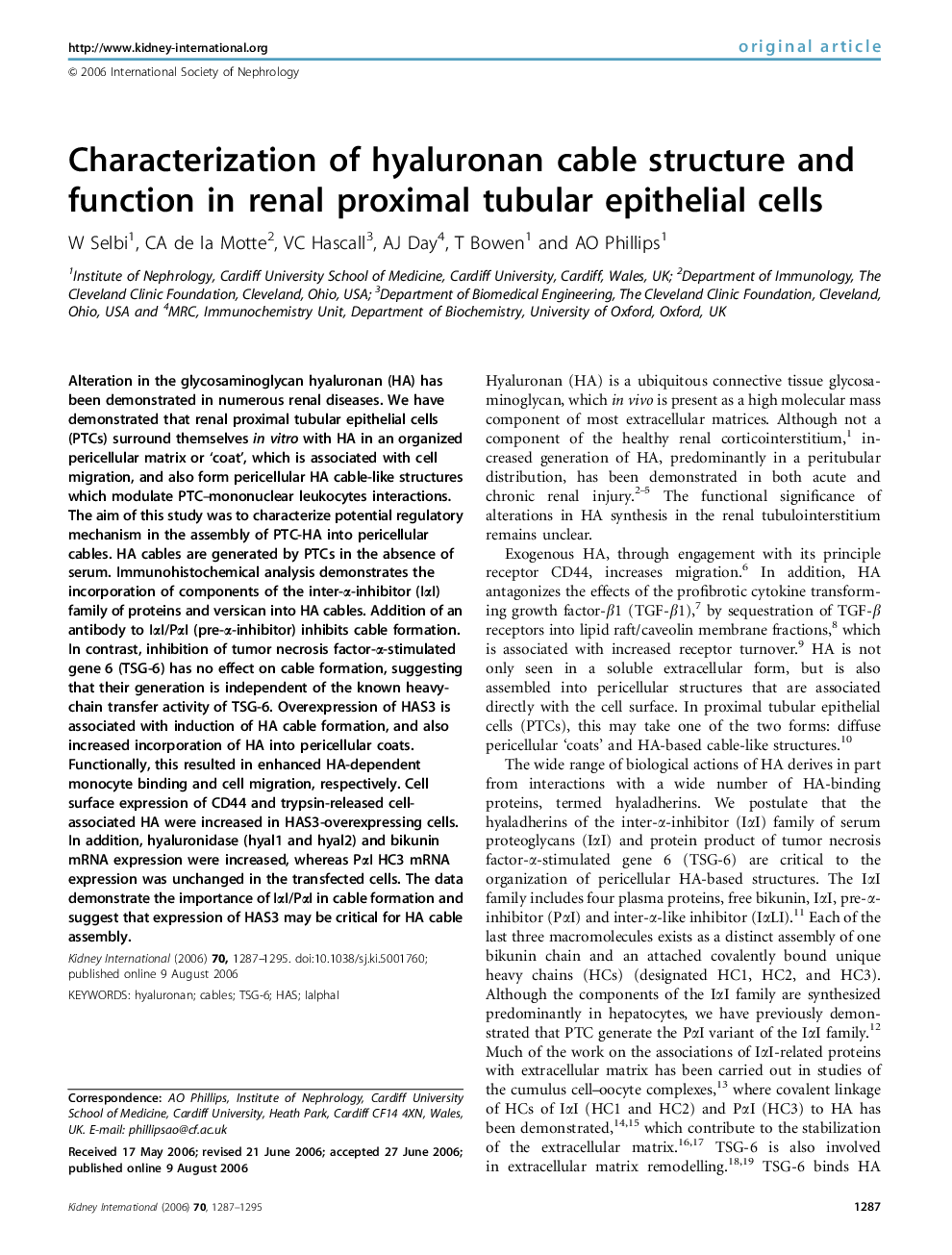| Article ID | Journal | Published Year | Pages | File Type |
|---|---|---|---|---|
| 3885213 | Kidney International | 2006 | 9 Pages |
Alteration in the glycosaminoglycan hyaluronan (HA) has been demonstrated in numerous renal diseases. We have demonstrated that renal proximal tubular epithelial cells (PTCs) surround themselves in vitro with HA in an organized pericellular matrix or ‘coat’, which is associated with cell migration, and also form pericellular HA cable-like structures which modulate PTC–mononuclear leukocytes interactions. The aim of this study was to characterize potential regulatory mechanism in the assembly of PTC-HA into pericellular cables. HA cables are generated by PTCs in the absence of serum. Immunohistochemical analysis demonstrates the incorporation of components of the inter-α-inhibitor (IαI) family of proteins and versican into HA cables. Addition of an antibody to IαI/PαI (pre-α-inhibitor) inhibits cable formation. In contrast, inhibition of tumor necrosis factor-α-stimulated gene 6 (TSG-6) has no effect on cable formation, suggesting that their generation is independent of the known heavy-chain transfer activity of TSG-6. Overexpression of HAS3 is associated with induction of HA cable formation, and also increased incorporation of HA into pericellular coats. Functionally, this resulted in enhanced HA-dependent monocyte binding and cell migration, respectively. Cell surface expression of CD44 and trypsin-released cell-associated HA were increased in HAS3-overexpressing cells. In addition, hyaluronidase (hyal1 and hyal2) and bikunin mRNA expression were increased, whereas PαI HC3 mRNA expression was unchanged in the transfected cells. The data demonstrate the importance of IαI/PαI in cable formation and suggest that expression of HAS3 may be critical for HA cable assembly.
